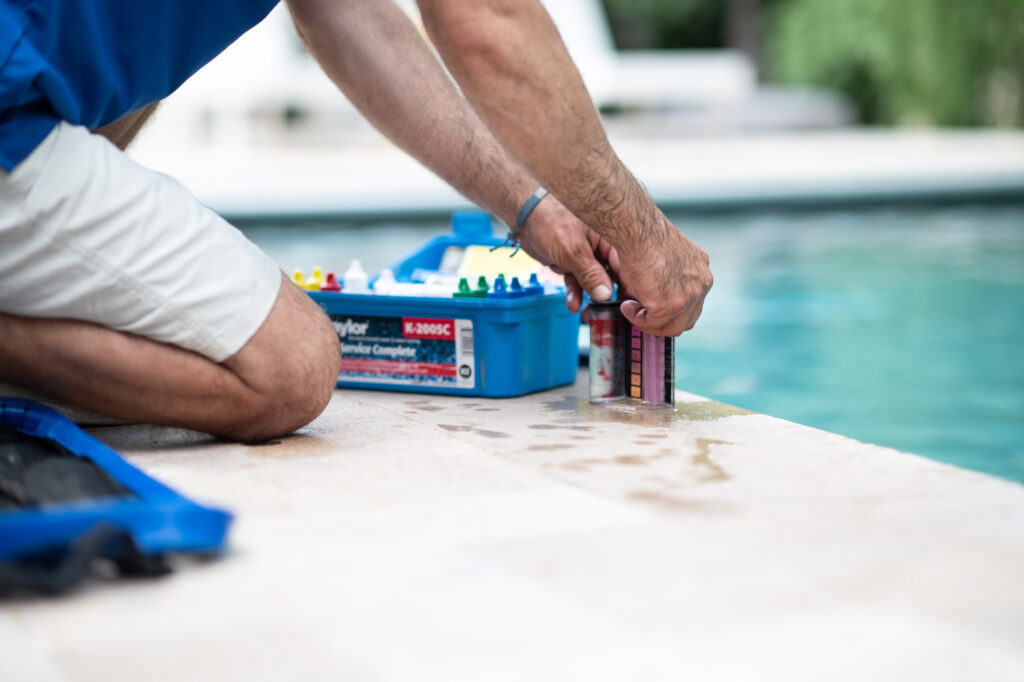
Scenic in a lagoon. Unsightly in your oasis. Algae can be a pool owner’s worst nightmare, turning your once-sparkling waters into a murky mess. Fortunately, the build-up of these unwelcome organisms is avoidable and treatable. With the right knowledge and proactive measures, you can effectively remove algae and prevent future outbreaks.
Understanding Algae
Algae are microscopic organisms that thrive in warm, nutrient-rich environments. They can come in various colors, each with distinct features and growth conditions. When these conditions are favorable, algae can rapidly multiply, overwhelming the pool’s filtration system and turning the water cloudy and discolored.
The most common types of algae include:
- Green Algae
- Pink Algae
- Yellow (Mustard) Algae
- Black/Blue-Green Algae
Green algae are the most common type, appearing as a green film or cloud in the water. They thrive in warm, nutrient-rich environments and can quickly spread if left untreated.
Pink algae are the same bacteria that appear in your bathtub or on shower walls. This substance commonly grows on plastic pool parts and equipment, such as skimmers, ladders, pool jets and toys.
Yellow (mustard) algae, which appears like yellow dust, commonly settle on pool surfaces and can be easily mistaken for sand, dirt or spring pollen.
Black/Blue-Green Algae, also known as cyanobacteria, are a type of algae that are more resistant to chlorine and can be difficult to remove. They often appear as slimy, round, black spots on the pool walls and floor.
Preventing Algae Growth
Preventing algae growth is crucial for maintaining a clean and healthy pool. Algae thrive in warm, nutrient-rich environments, so it is important to create conditions that are unfavorable for their growth. To help prevent algae growth:
- Maintain Proper Water Chemistry: Regularly test and maintain the correct levels of pH, alkalinity, calcium hardness and sanitizer. Phosphates are food for algae and may interfere with chlorine production.
- Shock the Pool: Regularly shocking your pool with chlorine will kill algae and bacteria.
- Clean the Filter: A clean filter is essential for proper circulation and preventing dead spots in areas of the pool where sanitized water cannot reach.
- Remove Debris: Remove leaves, twigs and other larger debris from the pool regularly to prevent nutrient buildup.
Removing Algae Build-Up
If algae have already invaded your waters, proper removal is crucial for maintaining a clean and safe swimming experience. Follow these steps to remove most algae types outside of black/green-blue algae.
First, use the pool skimmer to remove any surfaced debris, like sticks or leaves. Next, test your pool chemicals. If algae is present, your waters are likely unbalanced. Balance your levels (pH and alkalinity) as needed.
Then, shock the pool with a high dose of chlorine or algaecide to kill the algae spores. Different algae types require different levels of shock, so consult with your pool care professional on the best course of action
After that, brush the pool walls and floor to break up the algae’s hold on surfaces. Run the pool pump continuously to help filter out dead algae particles.
Once the algae turns grey, use your pool vacuum (if available) to suck up algae particles and clean the device immediately after so that no remnants recirculate into your pool.
Regularly backwashing or cleaning the pool filter is crucial to prevent clogs and ensure the effective removal of algae remnants. To prevent future outbreaks, maintain the pool’s chemical balance, regularly check the pH and chlorine levels, and ensure good water circulation and filtration.
If you suspect blue-green algae, it’s important to take immediate action.
- Close the Pool: Do not swim in or allow anyone else to swim in the pool until the algae is eliminated. (Suggested)
- Shock the Pool: Perform a strong shock treatment to kill the algae.
- Algaecide: Use a specific algaecide product designed to kill blue-green algae.
- Consult a Professional: For severe blue-green algae outbreaks, it may be necessary to consult a pool professional.
Black/blue-green algae are more pervasive than other strains and can latch onto and into the cracks in your pool. It is crucial to remove the hard outer casing off of the algae spores, to allow the sanitizer or algaecide to penetrate into algae spores. This is performed with a stiff bristle brush. The age and type of the pool finish will dictate what is ideal for your needs. Without a well-executed deep clean, this bacteria will likely return.
Keep Your Waters Crystal Clear
As the Lowcountry’s premier custom pool builder, Aqua Blue Pools is ready to bring your dream pool to life. Since 1991, our team has designed and built pools in a range of styles for residential and commercial clients from South Carolina’s Lowcountry to Savannah. We are proud to work closely with our clients to create and execute impressive custom projects built to last. Contact us today to begin planning your oasis!


